Catching Up: Linwood Ferguson’s NP101is
Back in 2021, we did a post on Florida’s Linwood Ferguson. Linwood imaged through his Tele Vue-NP101is using a full-frame (43.3mm diagonal), small pixel (3.76μm) camera, taking the scope to the limits of resolution and field size. We also thought he was a pretty skilled image processor: we were particularly struck by the choice of colors in his interpretation of a Rosette Nebula (NGC-2237 or Caldwell 49) imaged in Hubble Palette filters. We termed it an “eye-grabber” back then. We were most surprised to learn that his interest in astronomy had just been rekindled during the Covid pandemic and he was new to modern astrophotography. You can see that original post, Tele Vue-NP101is: Imaging the Skies Over Southwest Florida, on our blog. In this posting, we catch up Linwood to see his latest images.
Soul Nebula
The Soul Nebula (Sharpless 2-199 or LBN 667) is an emission located next to the Heart Nebula in Cassiopeia (the queen). The nebula primarily glows from ionized hydrogen gas. The usage of narrowband filters in the image below gives us a cutaway view inside this cloud of gas and dust. This rich, saturated image was described as “teetering on the edge of drama” by one commentator on AstroBin. There are many interesting cataloged features in this nebula – which are often used to designate the whole nebula. A dark rift in the nebula that almost splits it in two is designated IC 1871. You can see it in the image below as creating a small and large lobe. Among the several open clusters is IC 1848 which is composed of stars in front of the larger lobe. While you can’t see it visually, Westerhout 5 is a radio source in the nebula that covers an expanse equal to four full-Moons in area!
Speaking of drama, Linwood says that the final subframes were taken “a few days after Hurricane Ian came through, leaving clear skies behind it.” This September 2022 Category 5 Hurricane was one of the costliest weather disaster since statistics have been kept.

Dolphin Nebula
Sharpless 2-308 in Canis Major appears as an apparition suspended against the depth of space. It goes by several names: many see the grinning face of a porpoise or dolphin in this nebula while others see a gourd. This bubble of gas formed as the bright central Wolf–Rayet star (hot with strong solar winds) in the image shed outer layers of hydrogen gas. Stellar winds from the star are forcing the gas to collide with slower-moving shells of gas from earlier in the star’s evolution. This collision boundary forms the shape of the nebula that we see today. The central star, near the “eye” of the dolphin, named EZ Canis Majoris, is in a pre-supernova phase. This future supernova will form a black hole and obliterate the nebula we see here.
It took some effort to draw out the ethereal floating image below from the data locked in the subframe exposures. Also, what looks like a full-color image was created using only two narrowband filters that pass the ionized light of Hydrogen-alpha and Oxygen III. Usually, each filter is mapped to a single color channel. So how was it done? Linwood explains:
The image was created with Red = Hα, Green = (Hα*2 + OIII)/3, and Blue = OIII. I worked quite a bit to de-emphasize the surrounding stars, reducing their size in the synthetic luminance (from Hα + OIII) before the Luminance combine, but, even afterward, I applied a slight Gaussian blur to make the tiny stars less prominent.
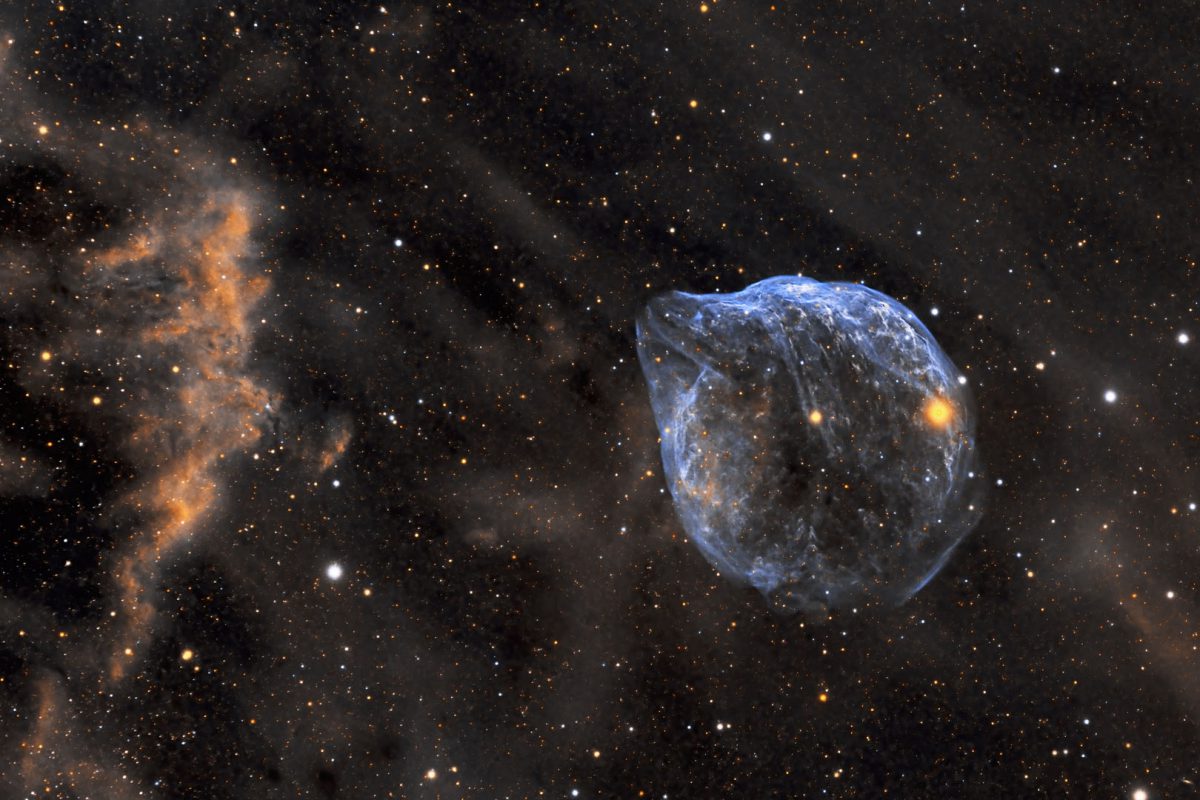
Witch Head Nebula
Residing at the foot of the constellation Orion near the blue supergiant star Rigel is the Witch Head Nebula (IC 2118). If you look carefully you’ll understand how the nebula got its name: it exhibits in profile the face of a cackling witch with a prominent jaw and pointy nose staring at Rigel. While its association with Orion is very firm (the light it reflects is from nearby Rigel at 40-light years distant) due to the way the constellation boundaries were drawn up, this reflection nebula is actually in neighboring Eridanus (the river). The bluish color of the nebula is due to dust scattering that wavelength more favorably, the same way that Earth’s sky is blue. Radio studies indicate the formation of stars in the nebula.
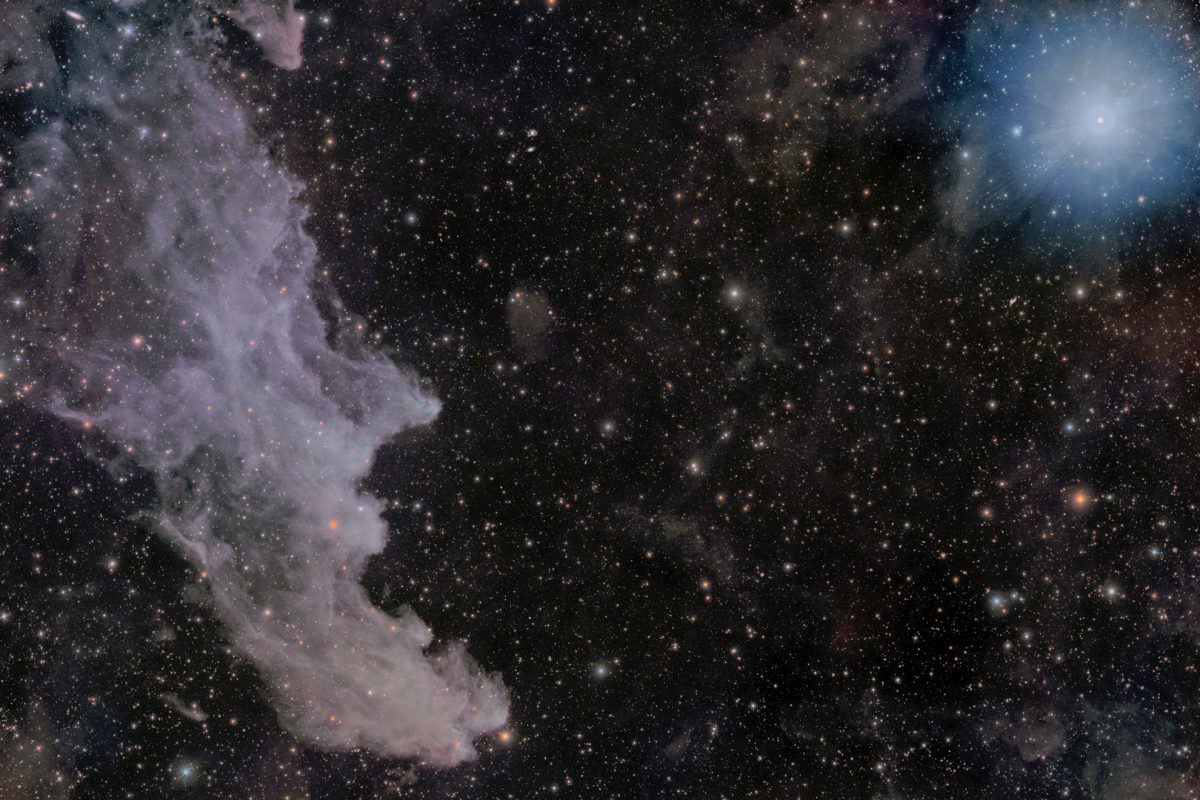
We’re glad to see that Linwood Ferguson continues to present compelling astrophoto images for all to enjoy. We wish him the best of luck on his future imaging endeavors.
Did you observe, sketch, or image with Tele Vue gear? We’ll like your social media post on that if you tag it #televue and the gear used. Example:
#televue #NP101is #ASI6200MMPro #soulnebula
Do you want your Tele Vue images re-posted on Tele Vue Optics’ Social Media accounts? Use this hashtag for consideration:



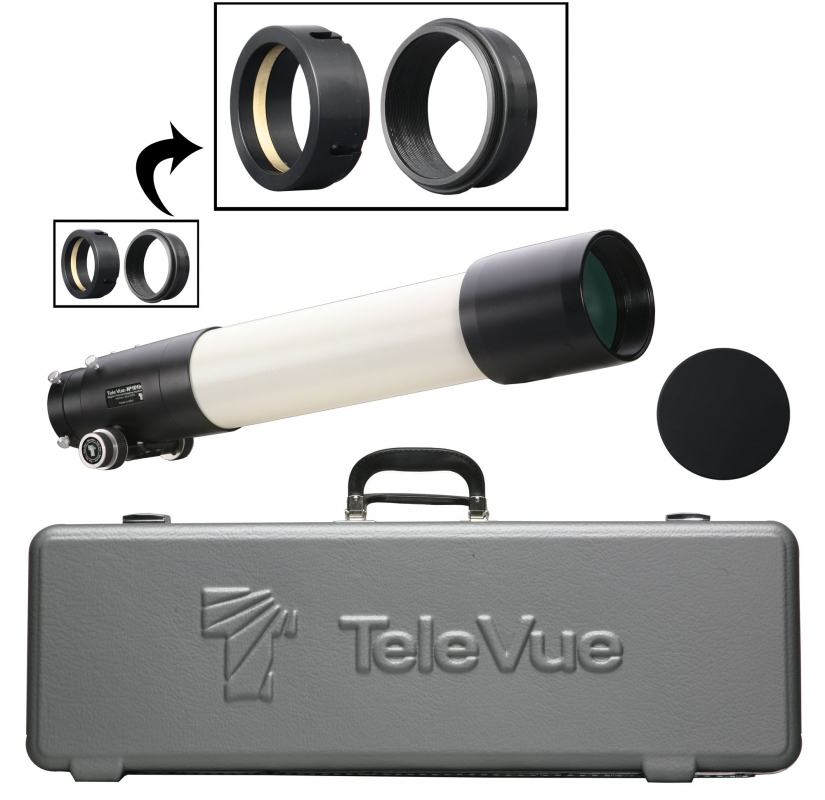
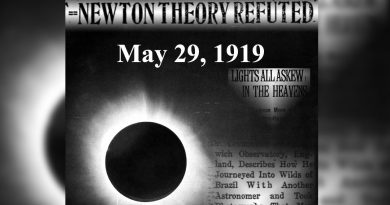
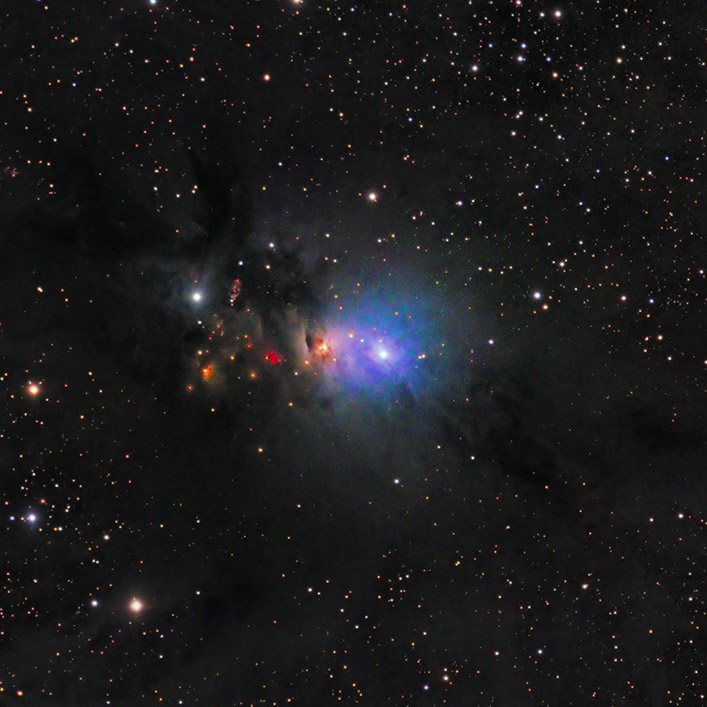
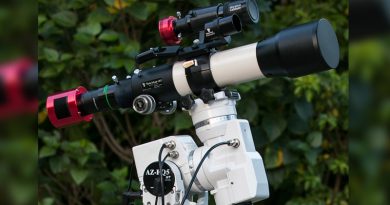
Wow! Mr. Ferguson’s images are amazing. Proof that you don’t need to spend a fortune to get some breathtaking deep-space images.
Thanks for sharing,
Ray Humphrys